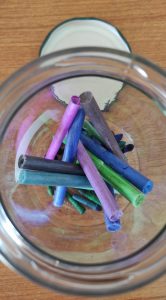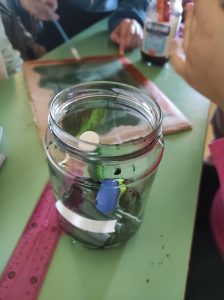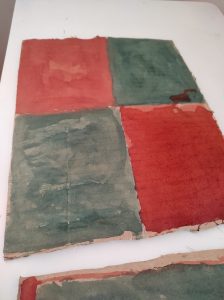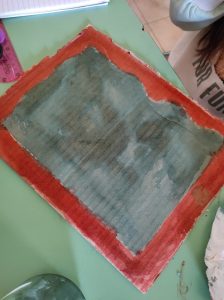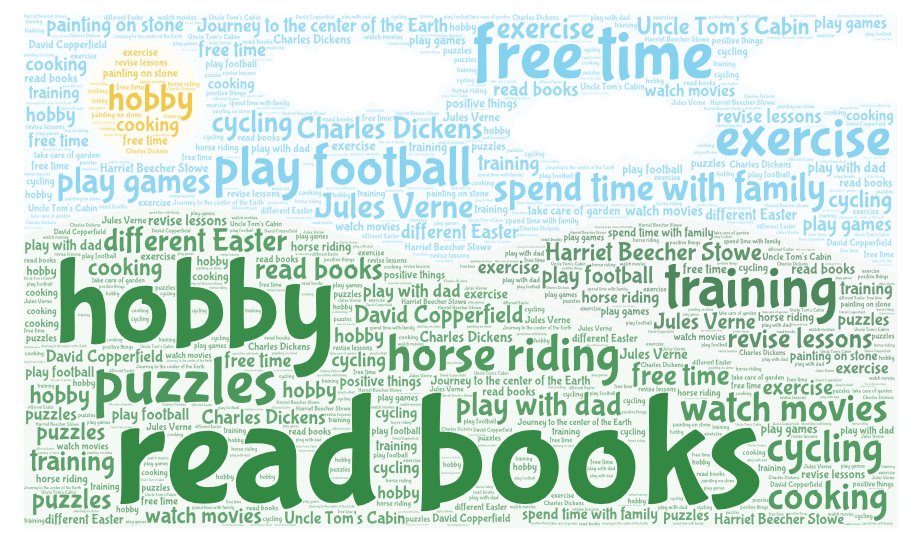Ο συγγραφέας Γρηγόρης Χαλιακόπουλος επισκέφθηκε το σχολείο μας, στα πλαίσια δράσης της βιβλιοθήκης μας για την προαγωγή της φιλαναγνωσίας και την ανάπτυξη – καλλιέργεια της κριτικής σκέψης των μαθητών. Οι μαθητές των τάξεων Γ’, Δ’, Ε’, ΣΤ’ παρακολούθησαν την παρουσίαση του πολύ επιτυχημένου βιβλίου Το Ταξίδι του Φερεϋντούν, των εκδόσεων Καλειδοσκόπιο, ενώ είχαν διαβάσει το βιβλίο και προετοιμάσει βιβλιαράκια με την κριτική τους, καθώς και πολύ ωραίες ερωτήσεις (Ε’ και ΣΤ’), και είχαν φτιάξει υπέροχες ζωγραφιές με χαρταετούς (Γ’ και Δ’).
Ο συγγραφέας μίλησε με πολύ ελκυστικό τρόπο στα παιδιά σχετικά με το βιβλίο, ενώ απάντησε με πολλή υπομονή και σε όλες τις ερωτήσεις τους. Υπήρξαν αρκετές φορές που οι μαθητές ξέσπασαν σε αυθόρμητο, γνήσιο χειροκρότημα, και ζήτησαν από τον κ. Χαλιακόπουλο να υποσχεθεί ότι θα επισκεφθεί ξανά το σχολείο μας, το Δημοτικό Σχολείο Σαβαλίων. Τον ευχαριστούμε πολύ!


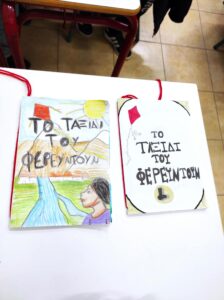
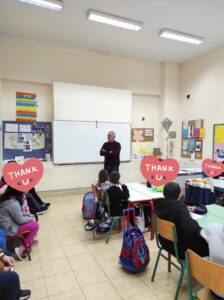

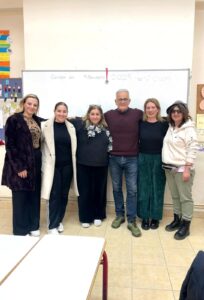

Ο Γρηγόρης Χαλιακόπουλος γεννήθηκε στα Φιλιατρά Μεσσηνίας. Είναι συγγραφέας, δημοσιογράφος, ποιητής και ερευνητής. Στη λογοτεχνία εμφανίστηκε το 1984, με την ποιητική του συλλογή «Μελλοντικά Παρελθόν του Σήμερα».
Υπήρξε συνιδρυτής της ανένταχτης και αντισυμβατικής ομάδας «Ξωτικά της Ποίησης» που έδρασε απ’ τις αρχές της δεκαετίας του 1990 για δέκα περίπου χρόνια, με θέατρο, ποιητικές βραδιές και πολιτιστικά δρώμενα στο κέντρο της Αθήνας.
Να επισημάνουμε ότι, το 2014, Το Ταξίδι του Φερεϋντούν ήταν υποψήφιο για το Κρατικό Βραβείο, ενώ τιμήθηκε με τη βραχεία λίστα του «Αναγνώστη».
Τη διετία 1994-1995 εξέδιδε και διηύθυνε την κοινωνική και λογοτεχνική εφημερίδα Αίσθηση Λόγου και Τέχνης, χωρίς χορηγούς και διαφημίσεις, με δωρεάν διανομή σε πανεπιστήμια, σχολές και βιβλιοπωλεία.
Υπήρξε πρωτεργάτης της καμπάνιας «Στείλε ένα Βιβλίο στο Κελί», για τον εμπλουτισμό της Βιβλιοθήκης των Φυλακών Κορυδαλλού, ενώ βοήθησε σημαντικά αρκετές ακόμη βιβλιοθήκες της περιφέρειας.
Συνεργάστηκε με περιοδικά και τις περισσότερες εφημερίδες του ημερήσιου και κυριακάτικου τύπου.
Θεατρικά του έργα ανέβηκαν στο «Ίδρυμα Μιχάλης Κακογιάννης», στο «Μέγαρο Μουσικής Αθηνών», στο «Διέλευσις», στο «Κνωσός», στο οποίο και διετέλεσε Καλλιτεχνικός Διευθυντής το 2016-17, και σε πολλές ακόμη σκηνές.
Έχει γράψει κείμενα και έρευνα για πολλά ντοκιμαντέρ που παίχτηκαν στην ΕΡΤ και στο Cosmote History, με ιστορικά και πολιτισμικά θέματα. Έχει κάνει πολυετή έρευνα, δημοσιεύοντας αρχεία του Δρομοκαΐτειου, πάνω σε πολύ ενδιαφέροντα ιστορικά πρόσωπα που έζησαν μέσα στο ψυχιατρείο, ενώ έχει δημοσιεύσει ανέκδοτες επιστολές και ποίηση μεγάλων μας ποιητών.
Αυτή την εποχή τον βρίσκουμε στην Αλεξάνδρεια, όπου είναι υπεύθυνος του Γραφείου Τύπου της ελληνικής κοινότητας.










